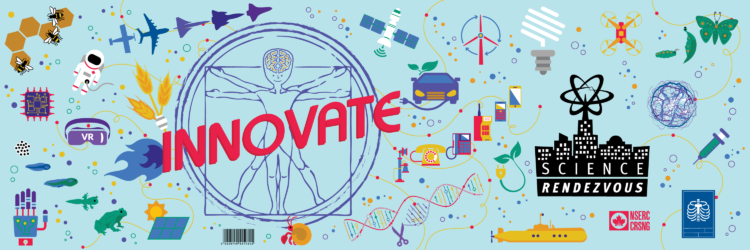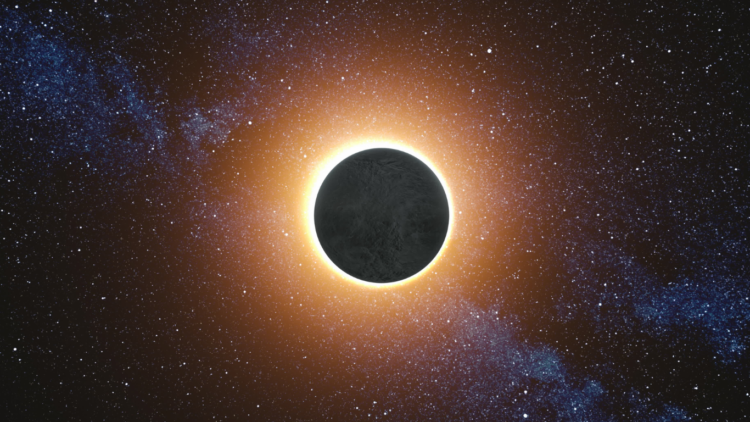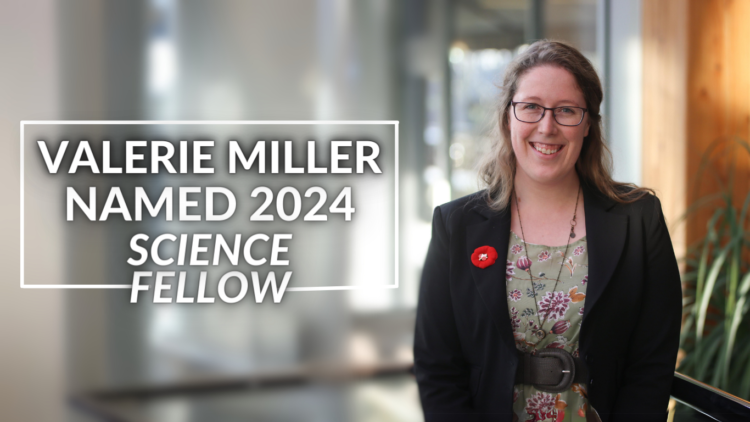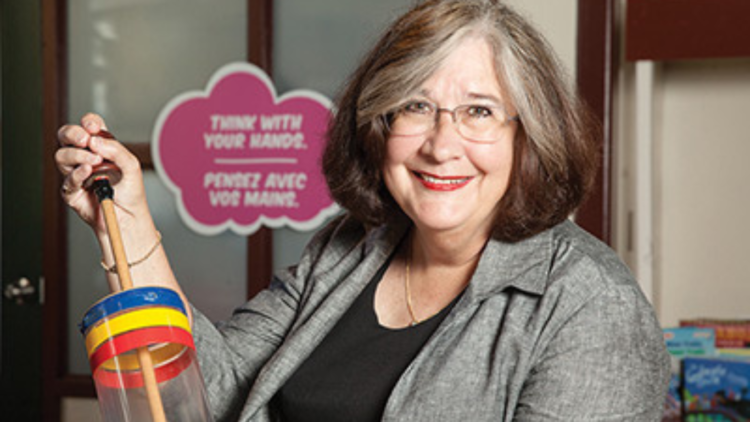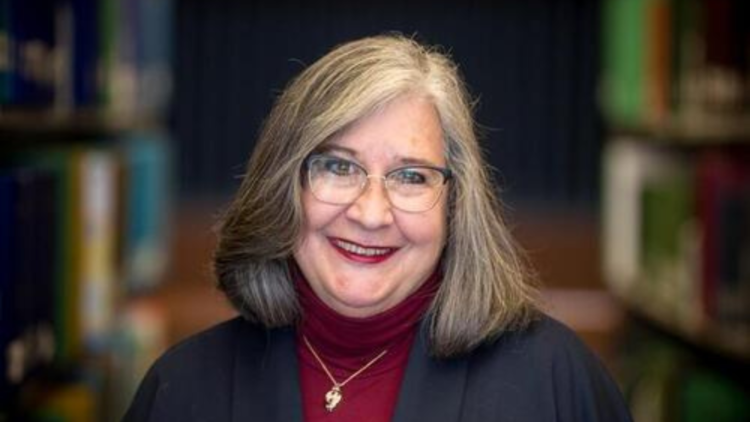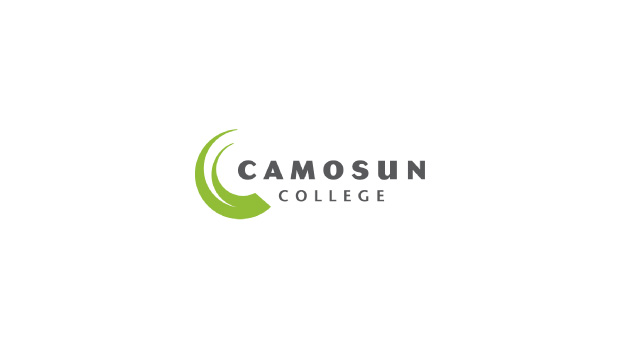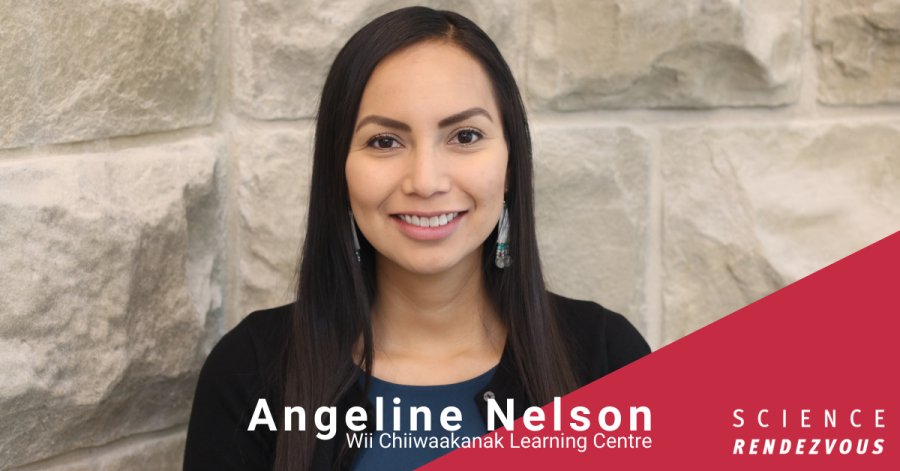
Angeline Nelson remembers having an early interest in chemistry as a child, but never thought she would pursue the subject in university. With an absence of a high school on her reserve, she attended the town school where she was the minority. She avoided chemistry, thinking that it would be too difficult. After studying nutrition in university for awhile, she realized it wasn’t really for her. “All of these potential fields of study that I want to pursue involved chemistry,” she recalled, and so she decided, “I’m just going to try it.”
She loved organic chemistry and biochemistry, but even though she did well in these subjects, those were the classes she experienced the most blatant racism. “I didn’t really see a lot of people that looked like me either,” she remembers. Knowing that these courses led to medical school and so many other different possibilities, Nelson felt that it was important that future Indigenous students see more others like them in their classes. This desire for increased representation led her to pursue science outreach, and programming like that of the Wii Chiiwaakanak Learning Centre.
The Wii Chiiwaakanak Learning Centre at the University of Winnipeg provides educational and cultural programs rooted in Indigenous language and knowledge. Nelson currently serves as the Director of Community Learning and Engagement, and is proud that the centre is Indigenous-led by her small team of three. “Underserved communities, such as BIPOC (Black, Indigenous and People of Colour) communities, need equitable opportunities as a start to bridge the gaps that are seen in probably every area of STEM,” says Nelson.
Serving as the bridge between the University of Winnipeg and the neighbouring community, the center has the perfect name. Wii Chiiwaakanak means “walking together” in Ojibwe. “We’re located within the West End, just off of downtown Winnipeg…so the university recognized that they were in this space,” Nelson points out. “A lot of these neighborhoods face significant challenges and barriers.” This community partnership initiative, which started in 2006, engages thousands of youth, families, and individuals within the community each year.
Partnership with community organizations is a key aspect of the programming at the Wii Chiiwaakanak Learning Centre, in addition to their own programming that runs on campus. Community programming is often free, after school and for local youth, but the organizations running them may not know where to start to provide STEM-based programming. “That’s an opportunity for us to continue to create these opportunities for kids who are already in these programs,” Nelson says. “These are the kids who definitely need it. These are the families who aren’t paying high admission costs for STEM programming but they need these kinds of equitable opportunities to access STEM. Exposure is so important for kids from a young age. We wanted to give the kids an opportunity to test their ability in different areas, to see their own potential, and to figure out what they might be interested in.”
Nelson stresses the importance of community partnerships for organizations seeking to successfully engage underserved communities. These community organizations already have strong relationships with the locals, as well as a large pool of participants who are already there and need that type of support. Often, building these relationships with communities means providing transportation and a meal or snack. “Those are all pieces that we try to make sure are part of our programming,” says Nelson. The Wii Chiiwaakanak Learning Centre doesn’t offer programming unless they are free and involve some kind of meal or snack. When transportation isn’t offered, the centre has bus tickets, or something similar, available for people who need it. She encourages partnering with community organizations, which are often already doing incredible and needed outreach. “They’re an excellent place to build partnerships if those are the kids you truly want to reach,” she urges.
In addition to community partnership, the Centre’s flagship program is their STEAM camp. It began as a math leadership camp run by volunteers who needed a host location, and continued to run for seven years. Over time, the Centre staff became more involved and set up to run the camp themselves. “We saw it as an opportunity to develop a more encompassing STEAM camp because there was already a big surge in funding towards computer science programming, but we thought, why stop there?” Nelson recalls. “Exposure for children at a young age in multiple areas of STEAM can light a lifelong pathway that wasn’t already lit.”
In 2019, the Math Camp became today’s STEAM Camp, an initiative that goes beyond just serving the community. For children living in poverty or facing various additional challenges, their parents may not already be thinking about their potential future as a doctor or a scientist, or all the other things they could do. “Families like that need additional support and for us, the STEAM Camp…is about giving them an opportunity from a very young age. We see all these different STEM programs geared to children, but there are so many barriers to accessing them,” says Nelson. “We realized the kids that we serve wouldn’t necessarily have a lot of access to STEM programming otherwise.”
Growing up on her reserve immersed in her culture with ceremonies and pow-wows, she brings her Indigenous knowledge and culture to the role. “It’s especially important for Indigenous people to understand our knowledge systems are worthy and have actually made important contributions to Western science.” For example, the Indigenous peoples of the Americas domesticated potatoes and contributed to many medicines, such as aspirin from willow bark. This continues to happen today. In fact, University of Winnipeg chemist, professor and program chair, Dr. Athar Ata is researching the use of traditional medicinal plants used by Indigenous peoples to treat Type 2 Diabetes. Nelson wonders, “How many other researchers there are doing this type of work and we just don’t know about it. These are the contributions that kids should know, that everyone should know!”
Nelson strives to ensure that there was an Indigenous perspective in the STEAM camp “because Indigenous people have always been scientists.” A captivating aspect of the STEAM camp is Rockford “Rocky” McKay, Anishinaabe and science facilitator for the Manitoba First Nations School System. Working together with Cree educator Wilfred Buck, he brings his inflatable planetarium and shares Indigenous star stories, teaching science and astronomy through an Indigenous lens. “He had so much to offer,” says Nelson of McKay, including Ojibwe culture, the Ojibwe creation story, the moon, the four seasons and the Ojibwe constellations.
Indigenous people have always been scientists, from understanding ecosystems, medicinal plants and agriculture. But this is not a narrative that has pervaded formal education. “We live on land that traditionally belongs to Indigenous people so their perspective is important.” Personally as an Ojibwe person, Nelson admits she doesn’t know the whole Ojibwe creation story, but within the many pieces that she’s heard, she can see and recognize the science embedded in them. Colonization, residential schools, and even the formal education system, has greatly disrupted the flow of knowledge that had been passed down from generation to generation. “It’s more important than ever to revitalize our language, culture and include our perspective, especially in STEM,” she says, “If those are the children we’re serving, then, it would be a disservice to not to also value their knowledge as well.”
It can be difficult to do, Nelson recognizes, considering what her own team does to bring in dozens of people to be part of the camp and share their perspectives, whether it’s Rocky about astronomy, or developing workshops based around Indigenous knowledge and Western science.
One of their workshops focuses on water. The common scientific perspective is that water is life. “That is absolutely true,” exclaims Nelson, “Where would be without it?” But the workshop goes beyond that. She explains that there are different teachings about water, whether it’s about respecting water, blessing water or even how it’s stored, all of which is found within the Ojibwe creation story. The chemistry professor involved with the workshop discusses copper’s use in storing water for ceremonies, cedar and other plants. “Even though I grew up in that way where I was surrounded by ceremony and teaching, there was still so much I didn’t know…I wanted the kids that we work with to grow up knowing these stories existed.”
There is a growing need and motivation for inclusivity. “STEAM outreach can be inclusive and really it should be more accessible to everybody,” Nelson says, “To do that, it’s important to meet people and to understand where people are at.” For the Wii Chiiwaakanak Learning Centre, that means free programming, provision of meals or snacks, and representation from the communities they serve, particularly incorporating Indigenous knowledge from the people whose land they’re on. Representation is important not just for staff, teachers and instructors, but also for guest lecturers, mentors, student jobs and most importantly, decision-makers. This is crucial in relating and connecting with the youth and families being served. Nelson noticed this in her own experience, where some youth naturally gravitated towards her because of shared experiences and challenges, understanding of family dynamics and funnily enough, a similar sense of humour. “Representation is important, it truly is,” Nelson thought, “The decision makers are the key to making those changes.”
To find out more about the work that the Wii Chiiwaakanak Learning Centre does, you can head to their website or this CBC article.
